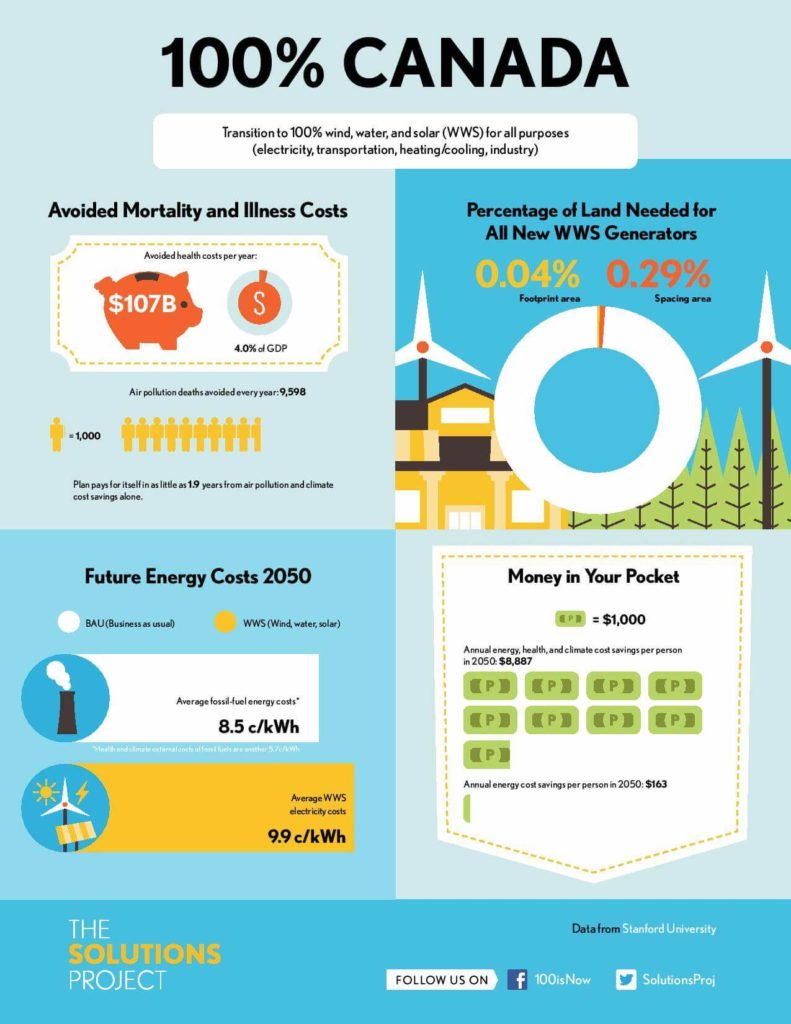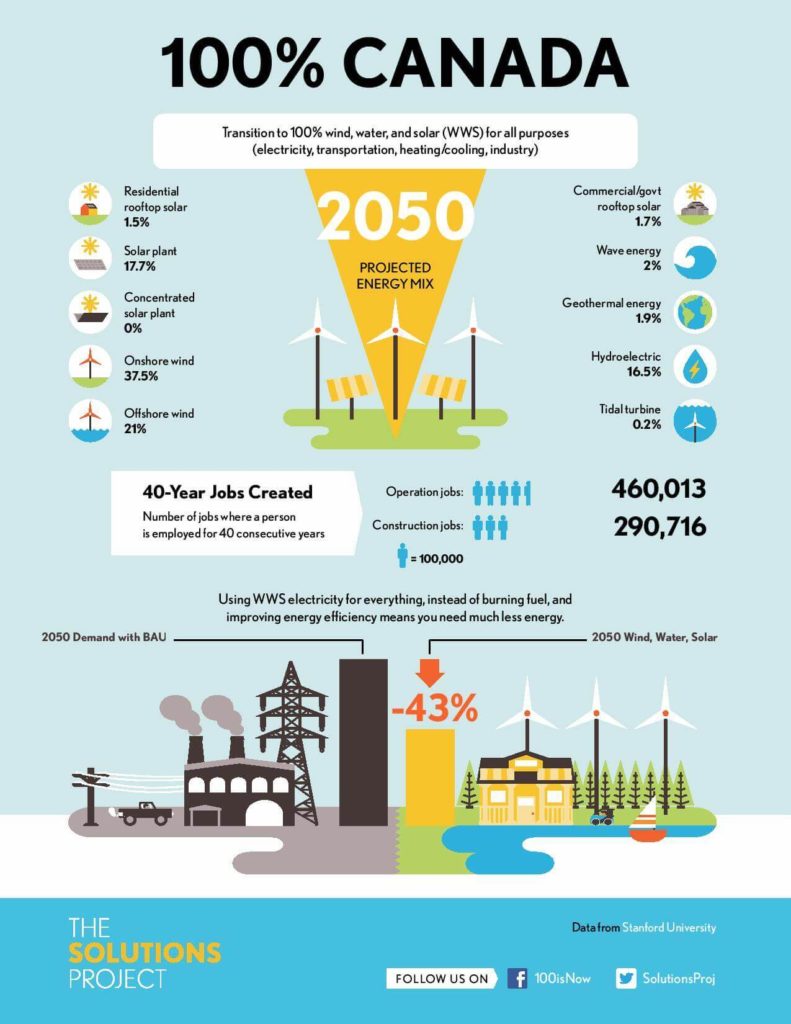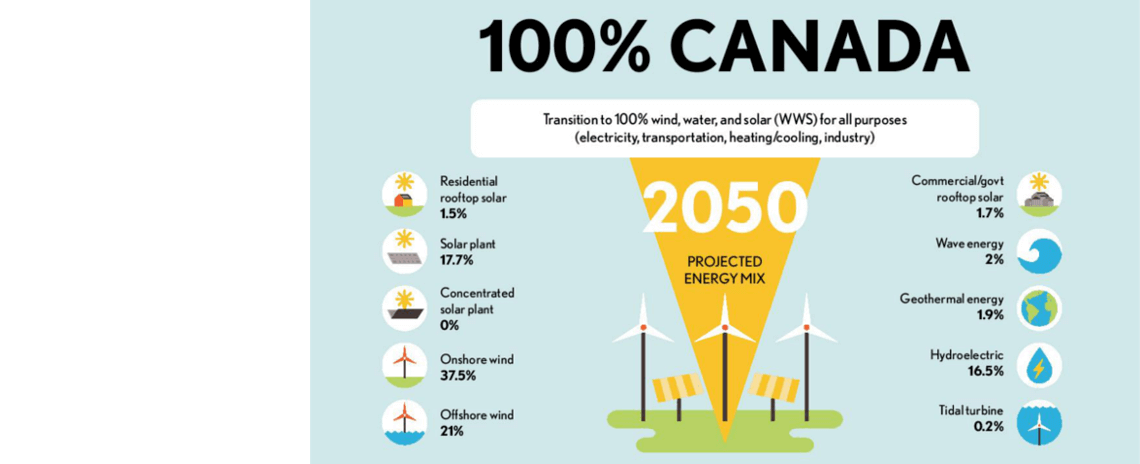
A research team from California’s prestigious Stanford University says all of Canada can go 100 per cent renewable by 2030.
The Solutions Project, whose goal is to move the world toward 100 per cent renewable energy, has calculated exactly how Canada can transition to a completely clean energy future using existing technologies.
The team of Stanford researchers has evaluated the wind, water and solar potential for all 50 U.S. states and 139 countries. They say Canada can go totally renewable by 2030 through the following breakdown: 58 per cent wind; 22 per cent solar; 16 per cent hydro; two per cent tidal and two per cent geothermal.

“That would power Canada for all purposes,” Mark Jacobson, co-founder of the Solutions Project and an engineering professor at Stanford, told CBC News earlier this month.
“In all sectors — electricity, transportation, heating and cooling, agriculture, forestry and fishing — we can transition all those sectors to clean, renewable energy at reasonable cost and make it reliable and make it secure for generations to come,” Jacobson said.
His colleague, Stanford business professor Tony Seba, argues the transition to clean energy could be reached even sooner — within 15 years. “Solar-installed capacity has doubled every two years since the year 2000,” Seba said in an interview with CBC. ”If you keep doubling that capacity, all you need is seven more doublings in order for solar to be 100 per cent of the world’s energy supply.”
The Solutions Project reports that in 2015, $367 billion (US) was invested in green energy, significantly more than the $253 billion (US) invested in fossil fuels. Bloomberg Business has reported that five major US coal companies have filed for bankruptcy in the last two years, something Seba says signals the “start of the end” for the non-renewable energy sector. He says this, combined with falling prices for solar power, energy storage and electric vehicles, will create big challenges for fossil fuel companies in the coming years.

The Stanford team says Canadians would see a long list of benefits by transitioning to such a diverse mix of renewable energy. They say it will create 200,000 new jobs in the energy sector and the conversion of 500,000 fossil fuel-related jobs into clean energy jobs. Air pollution from burning fossil fuels would be eliminated, saving the country more than $100 billion every year. Energy prices would stabilize. And Canada would meet the commitments made at the Paris climate change summit last year.
The Conservation Council works to raise the profile renewable energy here at home through our Renewables Solution NB project.


